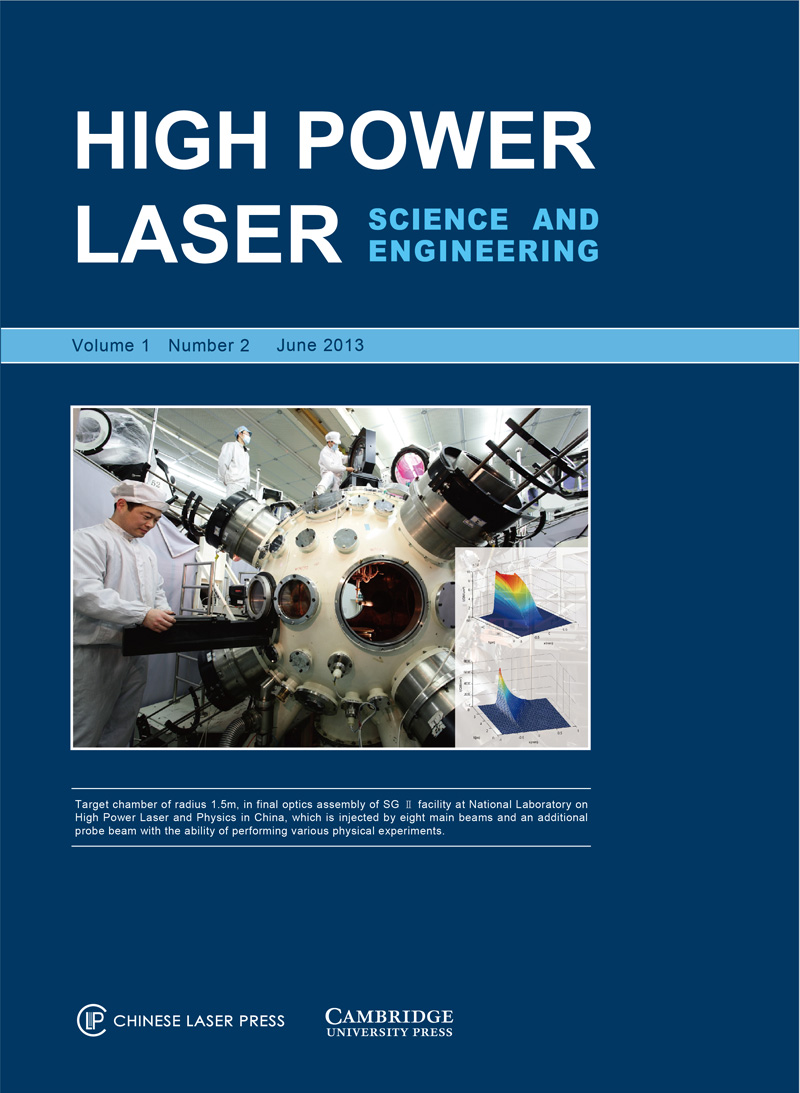 View fulltext
View fulltext
Theoretical–computational studies of table-top laser-driven nuclear fusion of high-energy (up to 15 MeV) deuterons with , , and D nuclei demonstrate the attainment of high fusion yields within a source–target reaction design. This constitutes a source of Coulomb-exploding deuterium nanodroplets driven by an ultraintense femtosecond near-infrared laser and a solid hollow cylindrical target containing the second element. The source–target reaction design attains the highest table-top fusion efficiencies (up to per laser pulse) obtained to date. The highest conversion efficiency of laser energy to nuclear energy (– for table-top DD fusion attained in the source–target design is comparable to that for DT fusion currently accomplished for ‘big science’ inertial fusion setups.
It is found that there is an upper-limit critical power for self-guided propagation of intense lasers in plasma in addition to the well-known lower-limit critical power set by the relativistic effect. Above this upper-limit critical power, the laser pulse experiences defocusing due to expulsion of local plasma electrons by the transverse ponderomotive force. Associated with the upper-limit power, a lower-limit critical plasma density is also found for a given laser spot size, below which self-focusing does not occur for any laser power. Both the upper-limit power and the lower-limit density are derived theoretically and verified by two-dimensional particle-in-cell simulations. The present study provides new guidance for experimental designs, where self-guided propagation of lasers is essential.
We demonstrated experimentally the formation of monoenergetic beams of accelerated electrons by focusing femtosecond laser radiation with an intensity of onto the edge of an aluminum foil. The electrons had energy distributions peaking in the 0.2–0.8 MeV range with energy spread less than 20%. The acceleration mechanism related to the generation of a plasma wave as a result of self-modulation instability of a laser pulse in a dense plasma formed by a prepulse (arriving 12 ns before the main pulse) is considered. One-dimensional and two-dimensional Particle in Cell (PIC) simulations of the laser–plasma interaction showed that effective excitation of a plasma wave as well as trapping and acceleration of an electron beam with an energy on the order of 1 MeV may occur in the presence of sharp gradients in plasma density and in the temporal shape of the pulse.
Considering the time delay in different hohlraum wall positions caused by oblique incidence, the spatio-temporal optical field distribution characteristics of a hohlraum wall, especially during the rising edge of a flat-topped pulse, is simulated by a fast Fourier transform method together with chromatography. Results demonstrate that beam propagation along the hohlraum wall is a push-broom process with complex dynamic spatial–temporal evolution. In the first few picoseconds, the optical intensity of the front position increases rapidly, while that of the rear position is relatively weak. The ratio of the optical intensity during the rising edge is smaller than that of the steady state. gradually increases and finally tends to the value of the steady state with time. Calculation also shows that, with shorter total width of the rising edge, of the optical field decreases and the difference compared to the steady state becomes larger. The evolution is more severe with smaller angle of inclination.
Recent experimental results on NIF revealed a much higher stimulated Brillouin scattering (SBS) and stimulated Raman scattering (SRS) backscatter than expected; one possible reason was due to the coherence between incident laser beams. In our research, two laser beams (, in each one) with different coherent degrees between them from the SG-II facility were employed to irradiate an Au plate target; the backscatter of SBS and SRS in the range of the given solid angle had been measured. The results showed that it could change dramatically corresponding to the difference of the coherent degree between the two laser beams, and there was usually more intense backscatter the higher the coherent degree between the incident beams.
Two different pulse cleaning techniques for ultra-high contrast laser systems are comparably analysed in this work. The first pulse cleaning technique is based on noncollinear femtosecond optical-parametric amplification (NOPA) and second-harmonic generation (SHG) processes. The other is based on cross-polarized wave (XPW) generation. With a double chirped pulse amplifier (double-CPA) scheme, although temporal contrast enhancement in a high-intensity femtosecond Ti:sapphire chirped pulse amplification (CPA) laser system can be achieved based on both of the techniques, the two different pulse cleaning techniques still have their own advantages and are suitable for different contrast enhancement requirements of different laser systems.
We present a recent numerical analysis of impedance mismatch technique applied to carbon equation of state measurements. We consider high-power laser pulses with a Gaussian temporal profile of different durations. We show that for the laser intensity () and the target design considered in this paper we need to have laser pulses with rise-time less than 150 ps.














